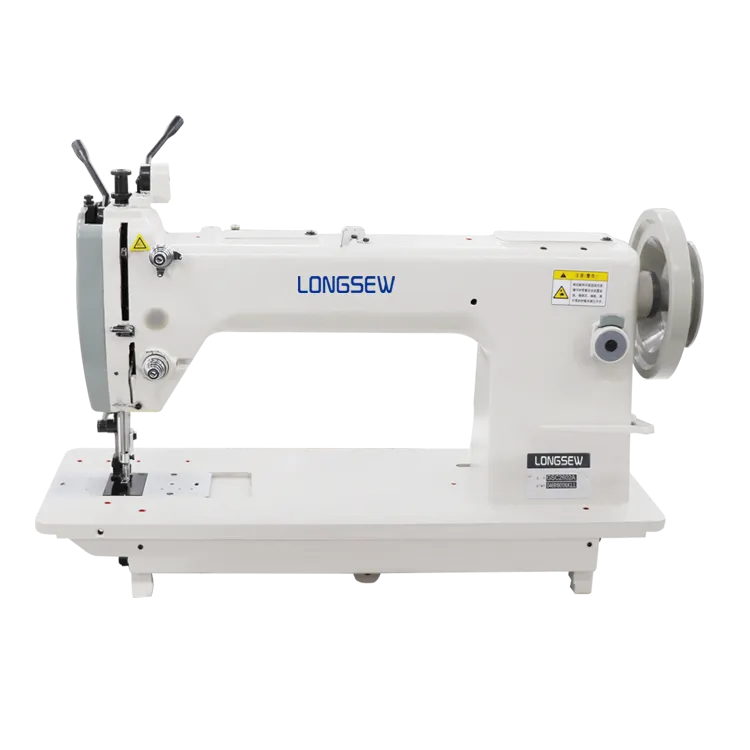DIY CNC Sewing Machine Projects for Creative Fabric Crafters and Enthusiasts
Exploring DIY CNC Sewing Machines A New Era in Fabric Crafting
In recent years, the world of sewing has witnessed a transformation with the advent of CNC (Computer Numerical Control) technology. Traditionally, sewing machines required a significant amount of manual labor and craftsmanship. However, with the integration of CNC technology, sewing enthusiasts, hobbyists, and professional textile creators are discovering an innovative way to enhance their projects DIY CNC sewing machines. This article delves into what a CNC sewing machine is, the reasons behind its growing popularity, and how DIY enthusiasts can embark on this fascinating journey.
What is a CNC Sewing Machine?
A CNC sewing machine is an advanced type of sewing machine that automates the sewing process using computer-based controls. Unlike traditional machines that require the user to guide fabric manually, CNC sewing machines can be programmed to execute precise sewing patterns with minimal human intervention. This allows for intricate designs, consistent stitching, and remarkable accuracy that would be challenging to achieve by hand.
CNC sewing machines work by utilizing a combination of software and hardware components. The software allows users to design sewing patterns digitally—these can be anything from simple straight stitches to complex embroidery patterns. The machine interprets these designs and controls the sewing head's movements, enabling it to perform repeated tasks flawlessly. This technology is especially beneficial for mass production in industries like fashion, upholstery, and automotive interiors, where consistency and precision are paramount.
The Rising Popularity of DIY CNC Sewing Machines
The popularity of DIY CNC sewing machines can be attributed to several factors. First and foremost, the accessibility of technology has grown. With platforms like Arduino and Raspberry Pi becoming more commonplace, hobbyists can now create their CNC sewing machines without needing extensive engineering knowledge or a significant financial investment.
Secondly, the growing trend of personalized fashion and home décor has inspired many individuals to seek unique, custom designs. A DIY CNC sewing machine allows crafters to produce original pieces efficiently, giving them the freedom to experiment with different patterns and fabrics. This personalization extends beyond clothing to accessories, quilts, and home furnishings.
Moreover, the DIY community is known for its collaborative spirit. Numerous online forums and social media groups focus on CNC technology in sewing, providing users with a wealth of resources, tutorials, and support. This sharing culture enables newcomers to learn from experienced makers, fostering a vibrant environment of innovation and creativity.
How to Build Your Own DIY CNC Sewing Machine
cnc sewing machine diy

Building a DIY CNC sewing machine may sound daunting, but with the right resources and commitment, it can be an enjoyable project. Here’s a simplified process to get started
1. Research and Plan Begin by researching existing CNC sewing machines and understanding their components. Determine what features you want to include and sketch a basic design.
2. Gather Materials You will need a stepper motor, a frame (which can be made from metal or wood), a sewing machine head, belts, pulleys, and a microcontroller (such as an Arduino). Many hobbyists also recommend using open-source software for programming and controlling the machine.
3. Assemble the Frame Construct the frame based on your design. Ensure it is sturdy enough to handle the weight of the sewing machine head and can maintain stability while the machine operates.
4. Install Components Install the stepper motors and connect them to the sewing machine. Make sure all moving parts are aligned and can operate freely.
5. Program the Machine Upload your sewing pattern designs to the microcontroller using compatible software. Familiarize yourself with the programming principles to fine-tune your machine’s movements.
6. Test and Iterate Once assembled, conduct several test runs to observe how the machine performs. Don’t hesitate to make adjustments to improve accuracy and functionality.
Conclusion
DIY CNC sewing machines represent an exciting intersection of technology and creativity. They empower individuals to push the boundaries of traditional sewing, fostering an innovative DIY culture that celebrates personal expression and craftsmanship. As technology continues to advance, the possibilities for what crafters can achieve with their CNC sewing machines are limited only by their imaginations. So, whether you’re a seasoned sewist or a curious beginner, consider diving into the world of DIY CNC sewing machines and unravel the endless possibilities they have to offer.
-
Heavy Duty Leather Sewing Machine: A Must-Have for Professional LeatherworkNewsMay.28,2025
-
Leather Sewing Machine: Essential for High-Quality LeathercraftNewsMay.28,2025
-
Extra Heavy Duty Sewing Machine for Premium Leather ApplicationsNewsMay.28,2025
-
Walking Foot Cylinder Arm Sewing Machine: Precision and Power CombinedNewsMay.28,2025
-
Industrial Cylinder Arm Sewing Machine: Engineered for High-Performance StitchingNewsMay.28,2025
-
Cylinder Bed Sewing Machine: A Powerful Solution for Precision StitchingNewsMay.28,2025
-
Zigzag Sewing MachineNewsMay.12,2025





























